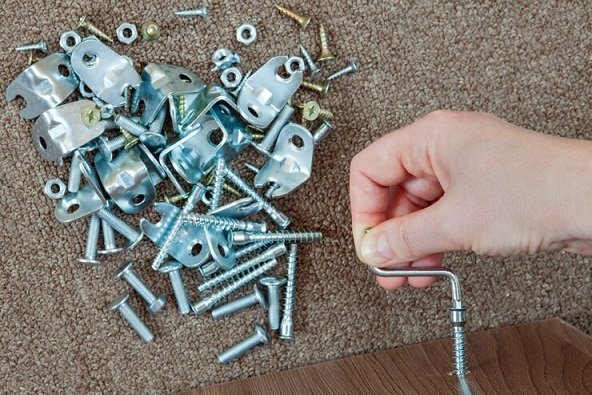As we input the world of construction, specifically with concrete systems, the satan is surely within the info. One such element, often overlooked by the layperson but essential to engineers and builders, is the size and form of bolts used to steady buildings. These components are probably small, but their effect on the general integrity and durability of a structure is giant. Using the appropriate bolt length, as exact under requirements like ASTM F1554, isn’t just a regulatory requirement but an essential thing of making sure the safety and capability of any concrete production.
Understanding the Significance of Bolts in Concrete Structures
Bolts are critical in production for securing two or extra substances collectively, typically serving as the spine of a structure through maintaining one of a kind sections firmly in vicinity. In concrete constructions, bolts are not best used for structural joints but also play a pivotal role in attaching outside elements to the principle framework, consisting of facades, frames, and other critical helps.
Concrete itself, at the same time as immensely long lasting and able to withstand big compression forces, lacks tensile power. This trouble is historically mitigated by embedding stainless-steel rods inside the concrete, known as rebar, which allows it to absorb tensile forces. However, the position of bolts is going past this by way of ensuring that the numerous additives of a building, reinforced with the aid of those metallic rods, continue to be securely mounted collectively, improving the structure’s typical integrity.
Why the Right Bolt Size Matters
Choosing the proper bolt size is vital for several reasons. First, the scale determines the bolt’s load-carrying capability. A bolt this is too small won’t hold underneath pressure, leading to structural disasters, whilst one this is too big could cause harm at some stage in installation, inclusive of cracking the concrete it’s intended to stable. Therefore, precision in bolt choice is essential for retaining the balance among energy and integrity in concrete structures.
ASTM F1554: Standardizing Bolt Sizes for Construction
ASTM F1554 is a standard specification set with the aid of the American Society for Testing and Materials that covers the requirements for anchor bolts utilized in concrete and other structural programs. This well known is crucial because it classifies bolts into specific grades primarily based on their electricity, composition, and appropriate usages, providing a tenet that allows engineers select the right bolt for the activity primarily based on calculated hundreds and environmental situations.
The specification outlines three distinct grades of bolts:
Grade 36 (low carbon metal): Commonly used for trendy applications.
Grade 55 (medium carbon metal): Suitable for higher load packages.
Grade 105 (alloy metallic): Designed for the best strength requirements.
Each grade is designed to meet unique conditions and masses, ensuring that each viable situation in concrete production may be accommodated effectively and efficiently.
The Impact of Proper Bolt Sizing on Building Safety
Using bolts that meet ASTM F1554 specifications guarantees that every one safety requirements are met, mainly in load-bearing conditions. Proper bolt sizing and installation help maintain the structural integrity of buildings in the course of regular stresses in addition to in intense situations like earthquakes or hurricanes. This adherence to standards no longer only protects the on the spot protection of the building’s occupants but additionally extends the lifespan of the structure through decreasing the chance of untimely failure.
Flexibility in Usage and Peace of Mind
One of the much less discussed, but good sized, benefits of using the successfully seized bolts and stainless-steel rods in concrete creation is the flexibility it gives. Buildings regularly go through adjustments in usage in the course of their lifestyles cycles, which might not have been predicted all through the initial engineering studies. Properly sized and hooked up bolts, conforming to strong standards like ASTM F1554, provide a degree of assurance that the construction can thoroughly accommodate adjustments in load and function without necessitating main overhauls.
Conclusion
The selection to use the proper bolt size in concrete structures, as according to ASTM F1554 requirements, is a testament to the commitment to safety, durability, and versatility in cutting-edge constructing practices. This technique not handiest ensures the structural integrity of homes however also gives peace of mind to engineers, builders, and occupants alike. In the dynamic international of creation, wherein protection and adaptability are paramount, the proper bolts are extra than simply fasteners; they’re the linchpins of modern architecture.
